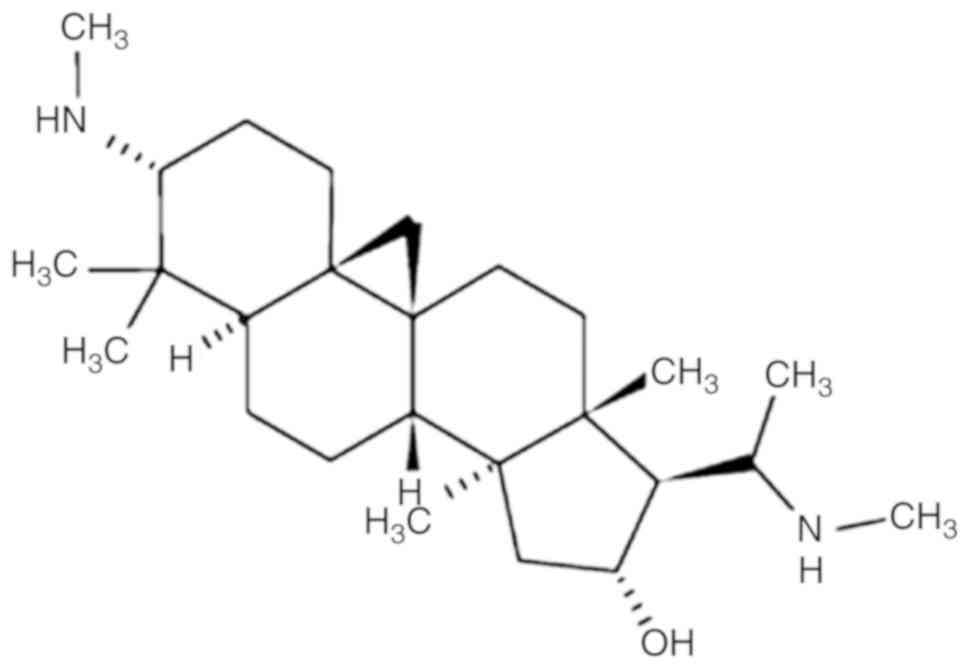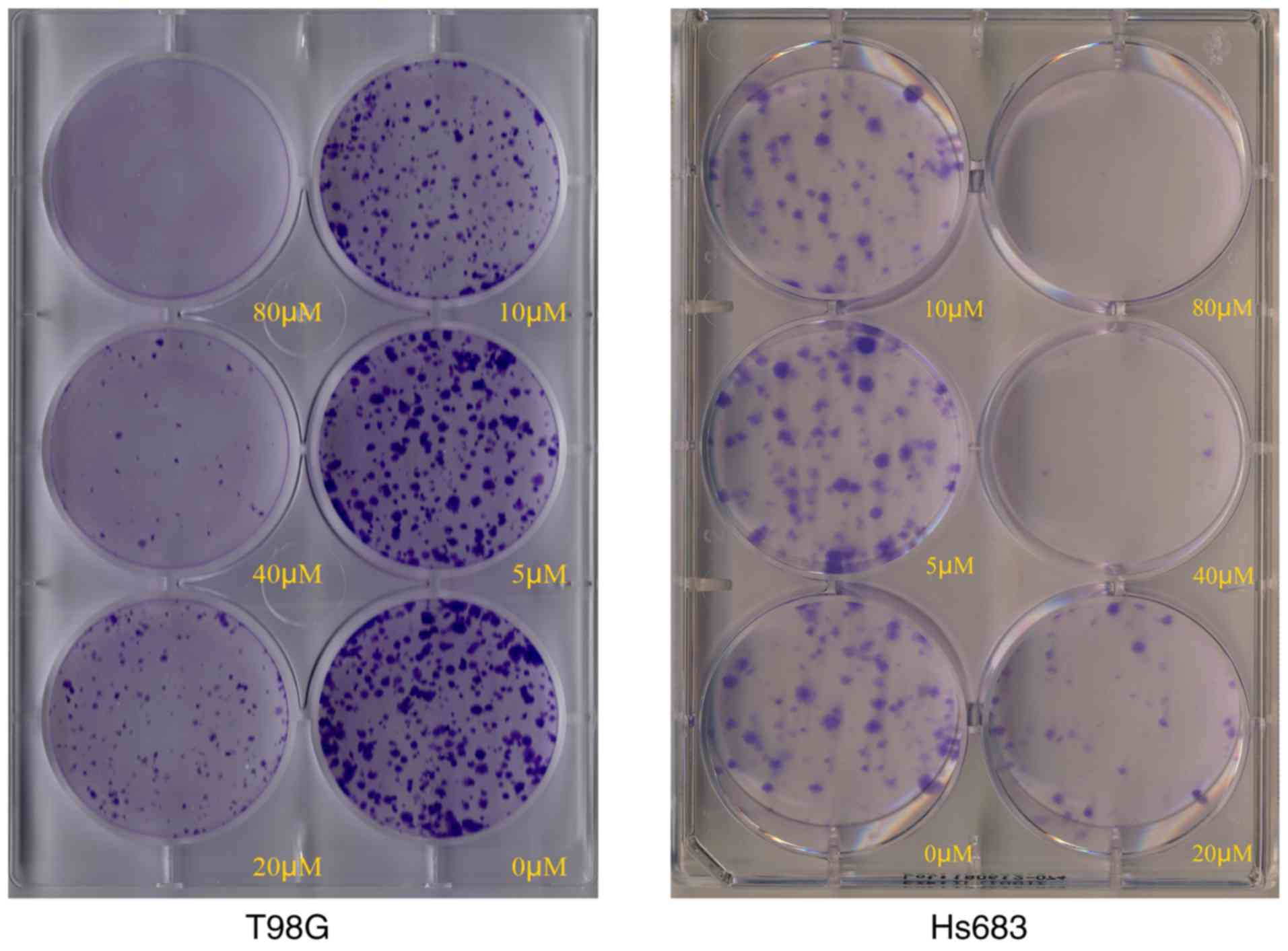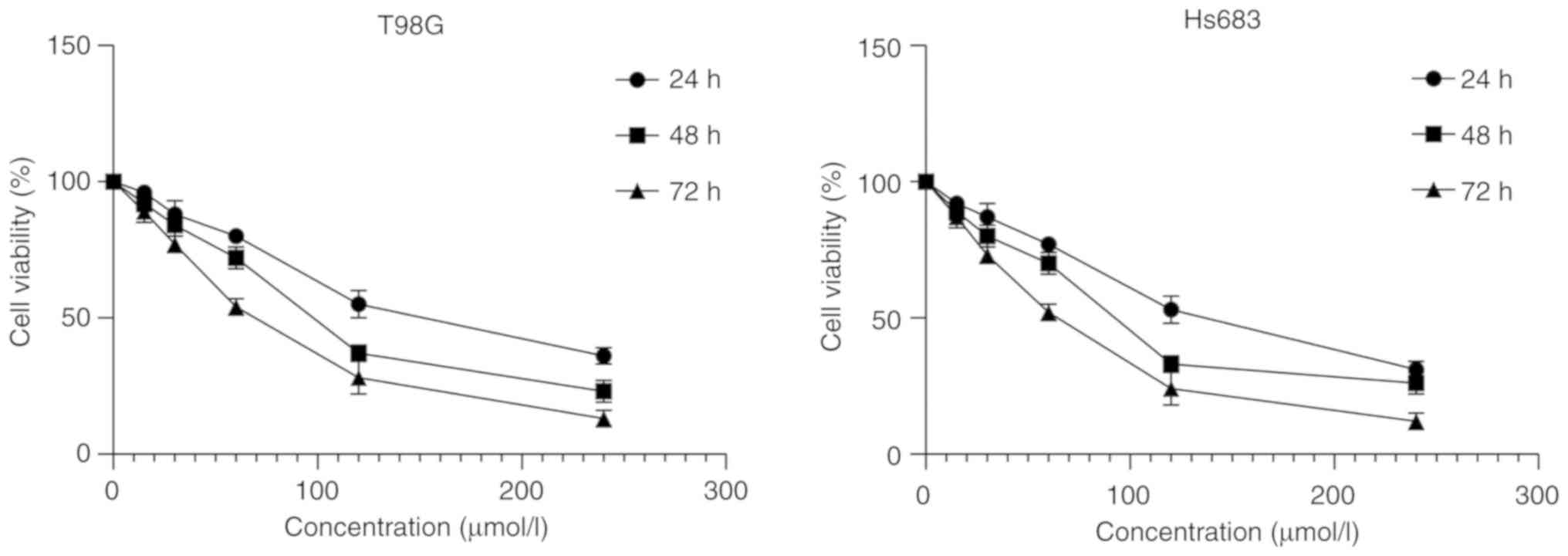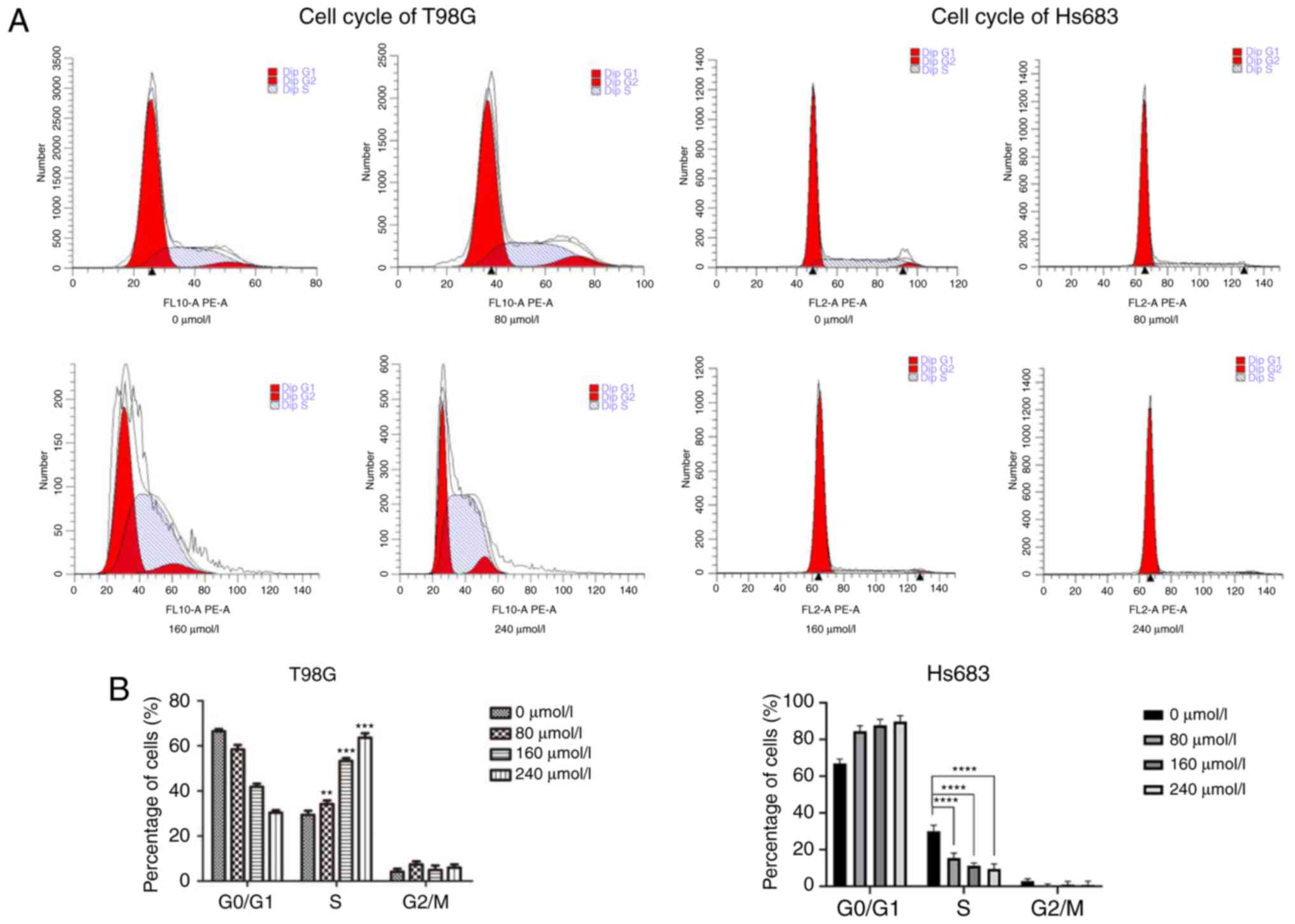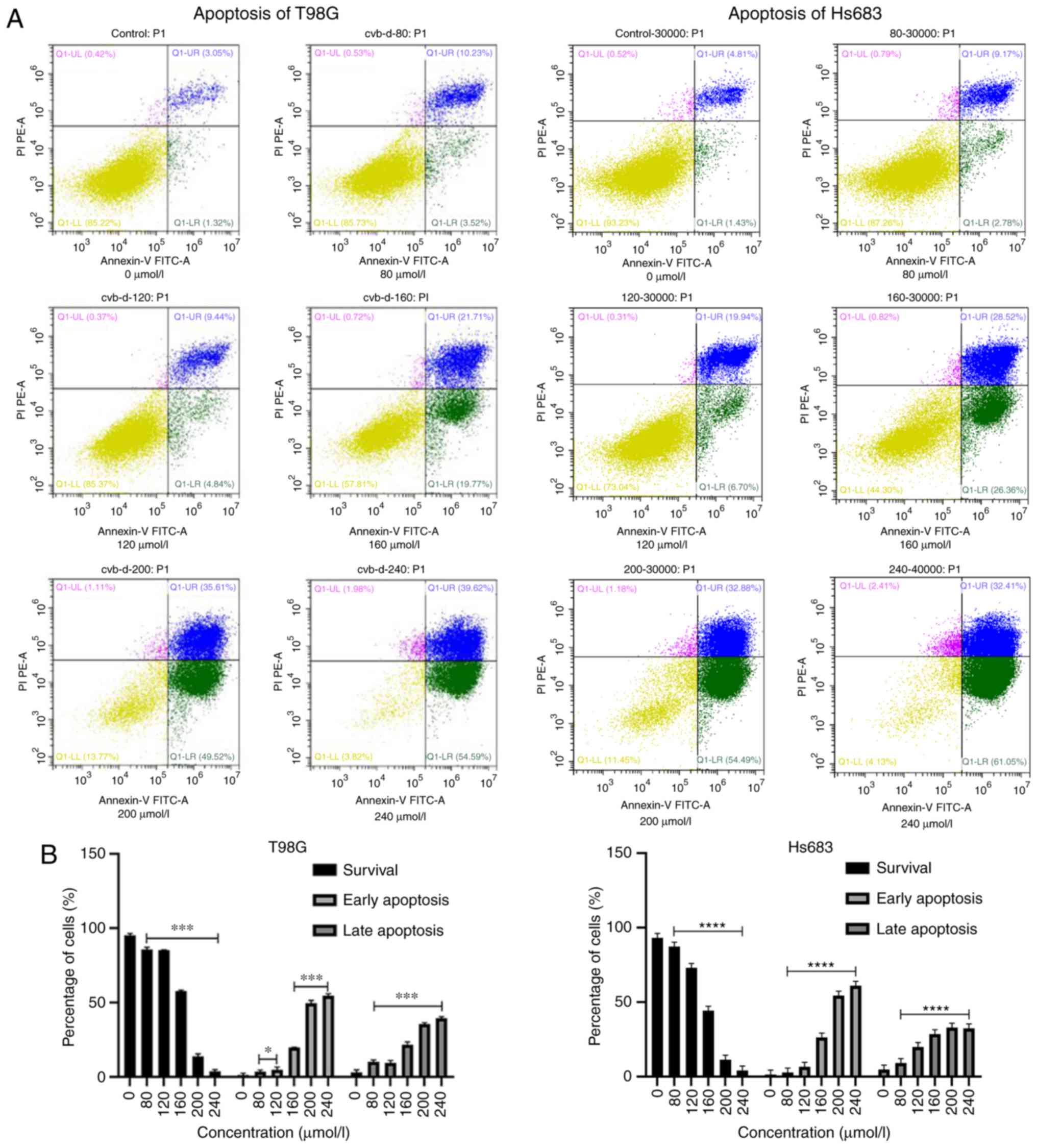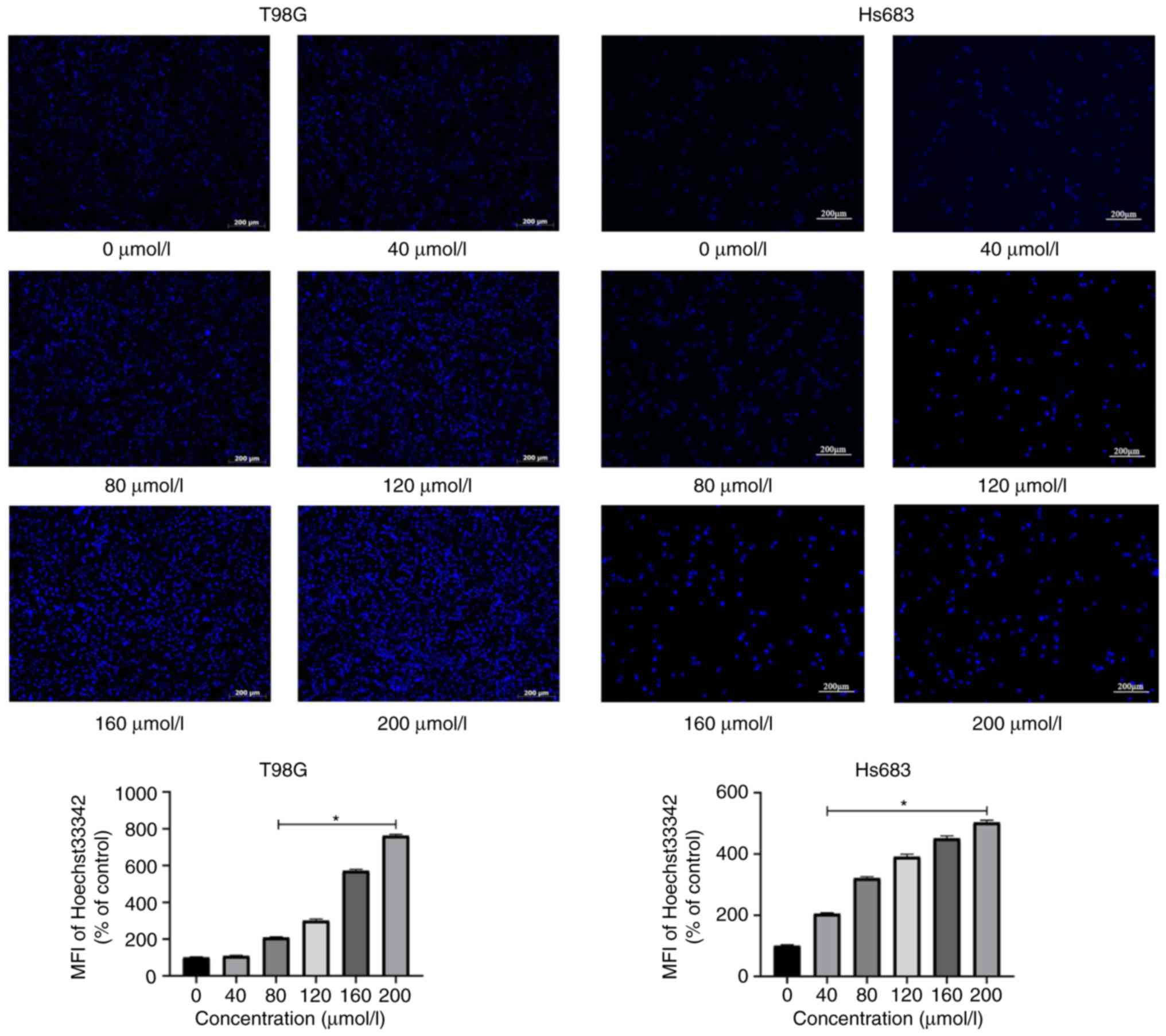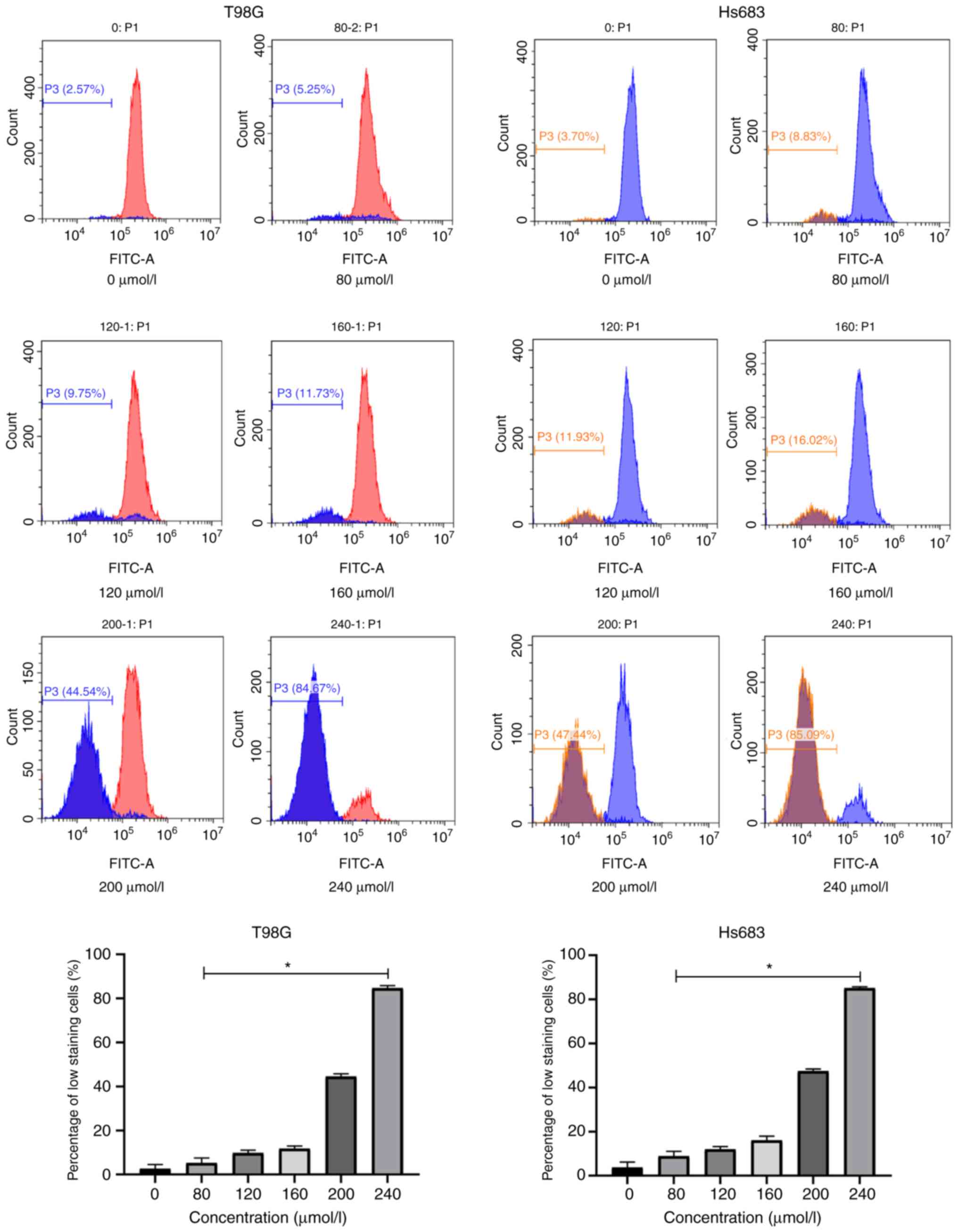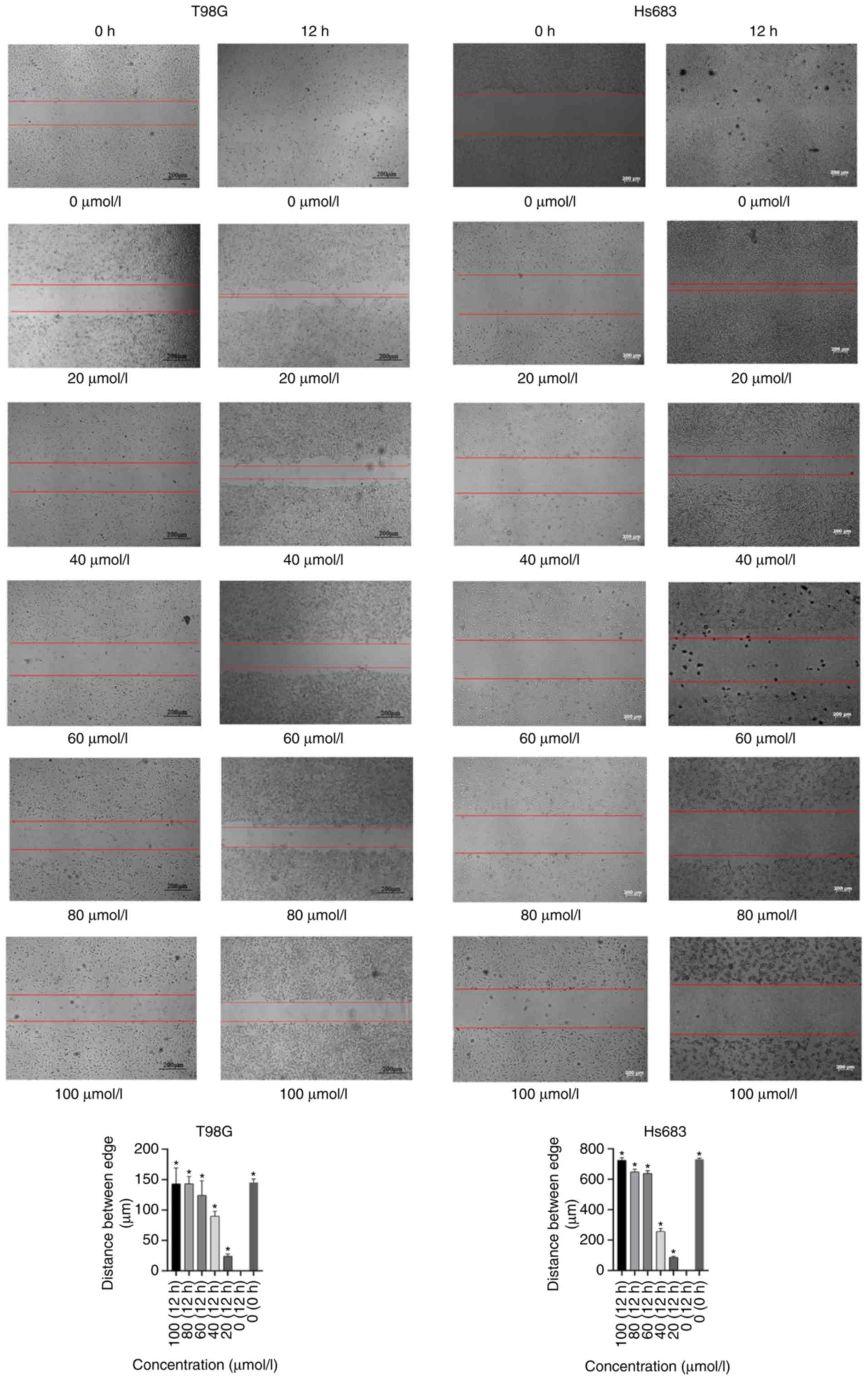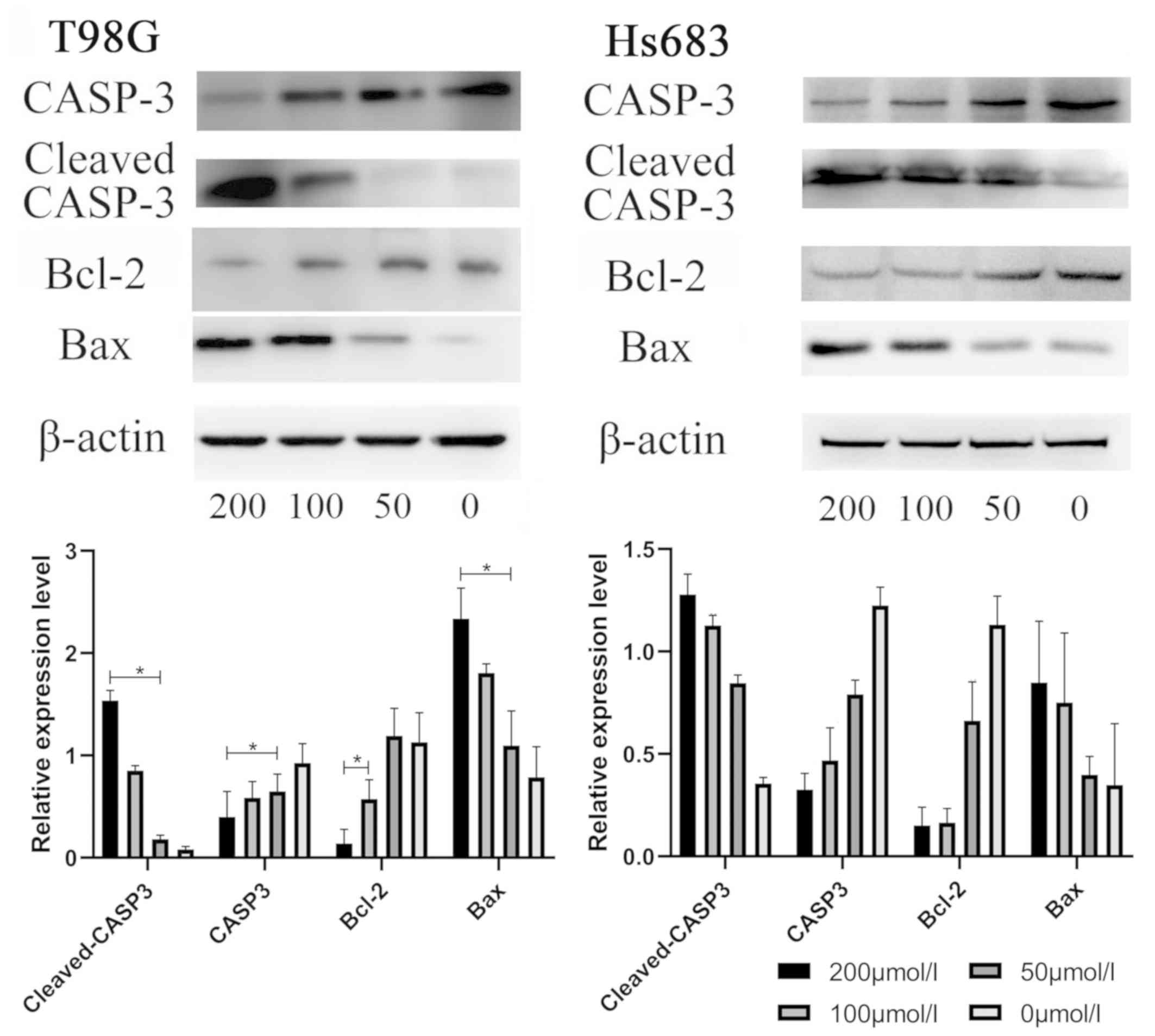|
1
|
Imperato JP, Paleologos NA and Vick NA:
Effects of treatment on long-term survivors with malignant
astrocytomas. Ann Neurol. 28:818–822. 1990. View Article : Google Scholar : PubMed/NCBI
|
|
2
|
Stupp R, Mason WP, van den Bent MJ, Weller
M, Fisher B, Taphoorn MJ, Belanger K, Brandes AA, Marosi C, Bogdahn
U, et al: Radiotherapy plus concomitant and adjuvant temozolomide
for glioblastoma. N Engl J Med. 352:987–996. 2005. View Article : Google Scholar : PubMed/NCBI
|
|
3
|
Ashok AR, Pouratian N, Sherman J, Ahmed G
and Shaffrey ME: Advances in brain tumor surgery. Neurol Clin.
25:975–1003. 2007. View Article : Google Scholar : PubMed/NCBI
|
|
4
|
Shan P, Mao RB, Xu JM and Li JX: The
beneficial effects of cyclovirobuxine D (CVBD) in coronary heart
disease. A double blind analysis of 110 cases. J Tradit Chin Med.
4:15–19. 1984.PubMed/NCBI
|
|
5
|
Grossini E, Battaqlia A, Brunelleschi S,
Mary DA, Molinari C, Viano I and Vacca G: Coronary effects of
cyclovirobuxine D in anesthetized pigs and in isolated porcine
coronary arteries. Life Sci. 65:59–65. 1999. View Article : Google Scholar
|
|
6
|
Yu B, Fang TH, Lü GH, Xu HQ and Lu JF:
Beneficial effect of cyclovirobuxine D on heart failure rats
following myocardial infarction. Fitoterapia. 82:868–877. 2011.
View Article : Google Scholar : PubMed/NCBI
|
|
7
|
Grossini E, Avanzi G, Gallicchio M,
Molinari C, Vacca G and Bellomo G: Regulation of Ca2+
Movements by cyclovirobuxine D in ECV304 endothelial cells.
Pharmacol Res. 52:154–161. 2005. View Article : Google Scholar : PubMed/NCBI
|
|
8
|
Chen QW, Shan HL, Sun HL, Wang H and Yang
BF: Effects of cyclovirobuxine D on intracellular Ca2+
and L-type Ca2+ current in rat ventricular
cardiomyocytes. Yao Xue Xue Bao. 39:500–503. 2004.(In Chinese).
PubMed/NCBI
|
|
9
|
Hu D, Liu X, Wang Y and Chen S:
Cyclovirobuxine D ameliorates acute myocardial ischemia by
K(ATP)channel opening, nitric oxide release and anti-thrombosis.
Eur J Pharmacol. 569:103–109. 2007. View Article : Google Scholar : PubMed/NCBI
|
|
10
|
Yue Y, Liu R, Liu J, Dong Q and Fan J:
Experimental and theoretical investigation on the interaction
between cyclovirobuxine D and human serum albumin. Spectrochim Acta
A Mol. Biomol. Spectrosc. 128:552–558. 2014.
|
|
11
|
Guo Q, Guo J, Yang R, Peng H, Zhao J, Li L
and Peng S: Cyclovirobuxine D attenuates doxorubicin-induced
cardiomyopathy by suppression of oxidative damage and mitochondrial
biogenesis impairment. Oxid Med Cell Longev. 2015:1519722015.
View Article : Google Scholar : PubMed/NCBI
|
|
12
|
Lu J, Sun D, Gao S, Gao Y, Ye J and Liu P:
Cyclovirobuxine D induces autophagy-associated cell death via the
Akt/mTOR pathway in MCF-7 human breast cancer cells. J Pharmacol
Sci. 125:74–82. 2014. View Article : Google Scholar : PubMed/NCBI
|
|
13
|
Burri SH, Gondi V, Brown PD and Mehta MP:
The evolving role of tumor treating fields in managing
glioblastoma: Guide for Oncologists. Am J Clin Oncol. 41:191–196.
2018.PubMed/NCBI
|
|
14
|
Thakkar JP, Dolecek TA, Horbinski C,
Ostrom QT, Lightner DD, Barnholtz-Sloan JS and Villano JL:
Epidemiologic and molecular prognostic review of glioblastoma.
Cancer Epidemiol Biomarkers Prev. 23:1985–1996. 2014. View Article : Google Scholar : PubMed/NCBI
|
|
15
|
Wu J, Tan Z, Chen J and Dong C:
Cyclovirobuxine D inhibits cell proliferation and induces
mitochondria-mediated apoptosis in human gastric cancer cells.
Molecules. 20:20659–20668. 2015. View Article : Google Scholar : PubMed/NCBI
|
|
16
|
Zhao W, Li X, Wang J, Wang C, Jia Y, Yuan
S, Huang Y, Shi Y and Tong Z: Decreasing eukaryotic initiation
factor 3C (EIF3C) suppresses proliferation and stimulates apoptosis
in breast cancer cell lines through mammalian target of rapamycin
(mTOR) pathway. Med Sci Monit. 23:4182–4191. 2017. View Article : Google Scholar : PubMed/NCBI
|
|
17
|
Lin J, Feng J, Yang H, Yan Z, Li Q, Wei L,
Lai Z, Jin Y and Peng J: Scutellaria barbata D. Don inhibits
5-fluorouracil resistance in colorectal cancer by regulating
PI3K/AKT pathway. Oncol Rep. 38:2293–2300. 2017. View Article : Google Scholar : PubMed/NCBI
|
|
18
|
Tan J, Shen W, Shi W, Chen X, Sun D, Xu C,
Yan Q, Cheng H, Lai Y and Ji H: ONTD induces growth arrest and
apoptosis of human hepatoma Bel-7402 cells though a peroxisome
proliferator-activated receptor γ-dependent pathway. Toxicol In
Vitro. 45:44–53. 2017. View Article : Google Scholar : PubMed/NCBI
|
|
19
|
Chen S, Fisher RC, Sign S, Molina LA,
Shenoy AK, Lopez MC, Baker HV, Koomen JM, Chen Y, Gittleman H, et
al: Inhibition of PI3K/Akt/mTOR signaling in PI3KR2-overexpressing
colon cancer stem cells reduces tumor growth due to apoptosis.
Oncotarget. 8:50476–50488. 2016.PubMed/NCBI
|
|
20
|
Amini-Farsani Z, Sangtarash MH, Shamsara M
and Teimori H: MiR-221/222 promote chemoresistance to cisplatin in
ovarian cancer cells by targeting PTEN/PI3K/AKT signaling pathway.
Cytotechnology. 70:203–213. 2018. View Article : Google Scholar : PubMed/NCBI
|
|
21
|
Zahed Panah M, Nikbakht M, Sajjadi SM,
Rostami S, Norooznezhad AH, Kamranzadeh Fumani H, Ghavamzadeh A and
Mohammadi S: Anti-apoptotic effects of osteopontin via the
up-regulation of AKT/mTOR/β-catenin loop in acute myeloid leukemia
cells. Int J Hematol Oncol Stem Cell Res. 11:148–157.
2017.PubMed/NCBI
|
|
22
|
Yu B, Ruan M, Zhou L, Xu L and Fang T:
Influence of cyclovirobuxine D on intracellular [Ca2+]
regulation and the expression of the calcium cycling proteins in
rat myocytes. Fitoterapia. 83:1653–1665. 2012. View Article : Google Scholar : PubMed/NCBI
|
|
23
|
Chen YF, Chen YT, Chiu WT and Shen MR:
Remodeling of calcium signaling in tumor progression. J Biomed Sci.
20:232013. View Article : Google Scholar : PubMed/NCBI
|
|
24
|
Stewart TA, Yapa KT and Monteith GR:
Altered calcium signaling in cancer cells. Biochim Biophys Acta.
1848:2502–2511. 2015. View Article : Google Scholar : PubMed/NCBI
|
|
25
|
Macià A, Herreros J, Martí RM and Cantí C:
Calcium channel expression and applicability as targeted therapies
in melanoma. Biomed Res Int. 2015:5871352015. View Article : Google Scholar : PubMed/NCBI
|
|
26
|
Wei H, Liu T, Jiang N, Zhou K, Yang K,
Ning W and Yu Y: A novel delivery system of Cyclovirobuxine D for
brain targeting: Angiopep-conjugated polysorbate 80-coated
liposomes via intranasal administration. J Biomed Nanotechnol.
14:1252–1262. 2018. View Article : Google Scholar : PubMed/NCBI
|















